Laces of all varieties have been made by machine since the 1880s. The invention of lace-making machines proved to be both a benefit and a bane. Handmade lace had always been a privilege of the wealthy, but the lace produced by machines, was relatively inexpensive, making it available to women of all classes. The bane of the mechanization of lace-making, was that it put thousands of women out of work — women of England, Ireland, Belgium, France, Switzerland, Italy, who were masters of the art and depended on sales of lace to support their families.
Lace is still made by machine today. There are many types of lace-making machines, one of which is the Schiffli, that can replicate virtually any kind of hand-made needle lace, bobbin lace, knotted lace or embroidered lace and do a remarkable job. High quality British and European Schiffli lace was, and still is, used to make fine dresses and gowns – Princess Diana’s wedding gown, for example. Couture designers often use Schiffli lace in their designs as well.
Here are only three examples of the hundreds of Schiffli laces masquerading as handmade. See how pretty these good quality machined laces are.
You might say, “It all looks beautiful. How can I tell the difference between handmade lace and Schiffli machine-lace?” It is a good question! The entire answer is far too long to be delineated here; there are many clues to consider. We will look at only two for now: 1.) the little connector threads, called brides and 2.) the flat, solid, filled-in areas of the motifs or designs.
Handmade needle lace has regular, precise, tiny button-hole stitches forming the brides. They are made with a needle and thread and are meticulous. Below right.
Handmade Cluny bobbin lace has neat, even, tiny braiding that forms the brides. They are made by hand-manipulation of the bobbins. Beautiful!
Look at Schiffli brides. See how twisted and irregular they can be — lumpy, thick, thin. They are not beautiful, but from a distance, they are not readily seen. That is one identifying characteristic. This photo is of one of the more egregious.
Another characteristic to look for is the nature of the filling stitches inside the motifs — the solid design areas. Notice the tiny, precise handwork on the solid areas in these three handmade laces.
Compare the three handmade examples above to the Schiffli below. The Schiffli motifs are filled in with an easy-to-spot, loose, irregular, basket-like weave.
Lace identification is more complex than the few examples I have given you here, but it is a start. The key is to look closely! So, which one below is handmade lace and which is Schiffli machine-made? How do you know?




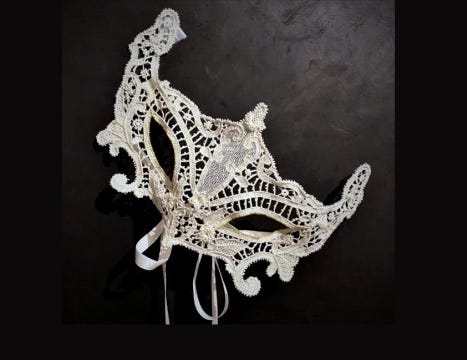
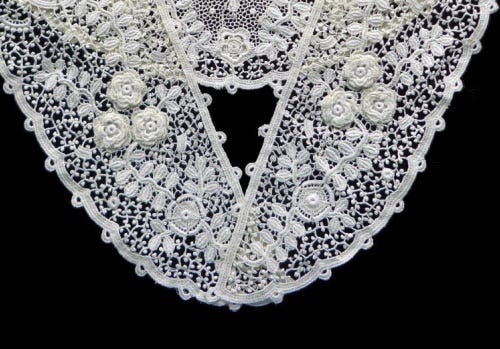

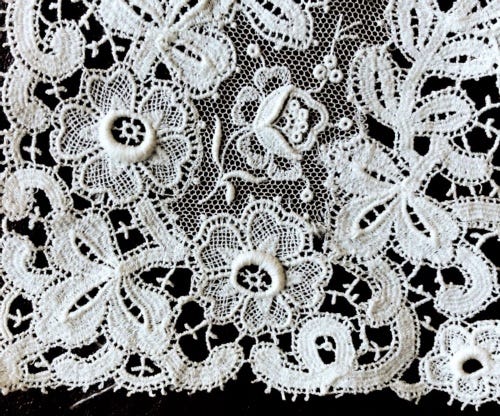
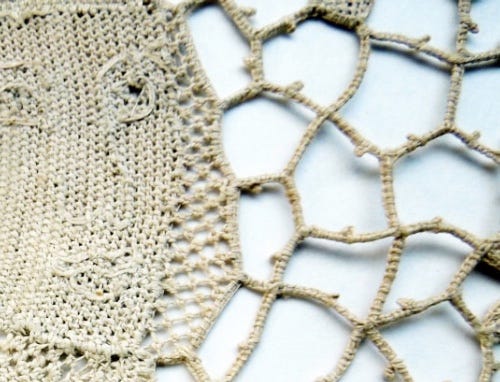
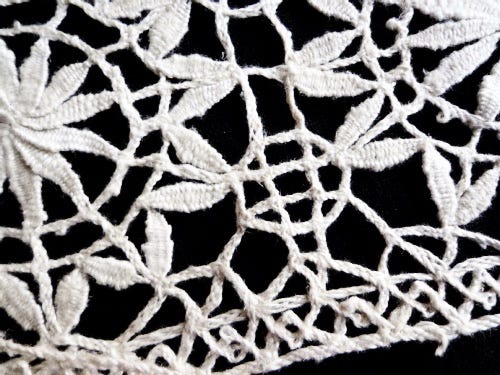

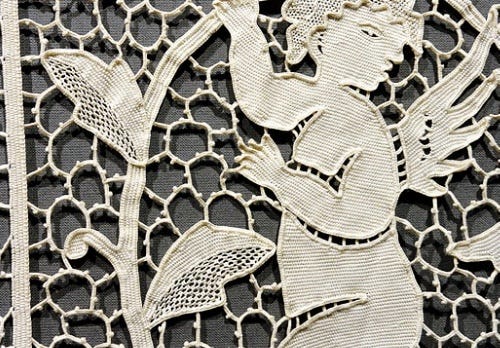
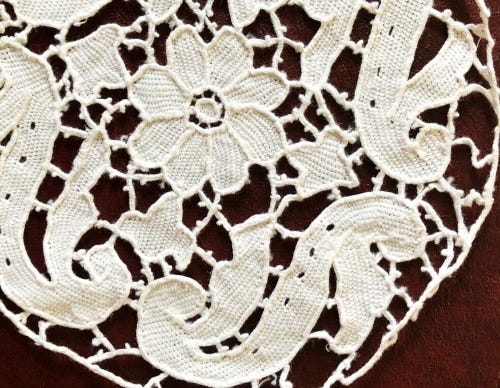

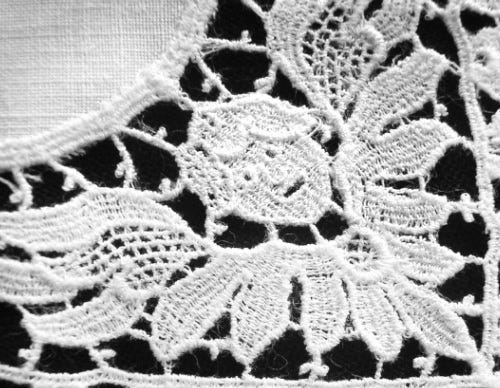
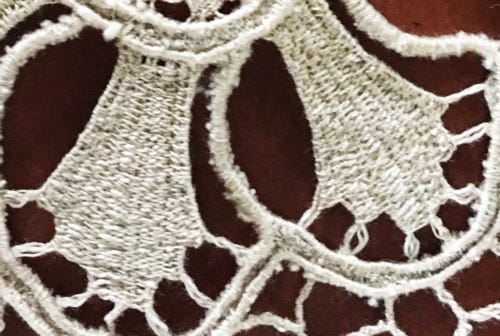
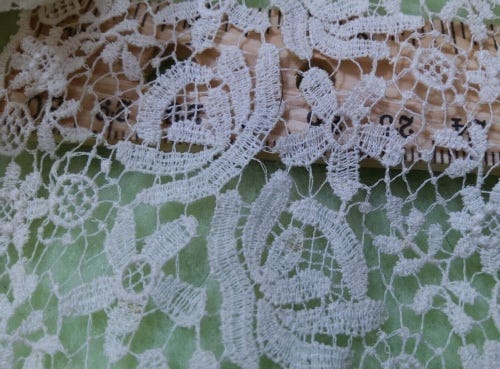
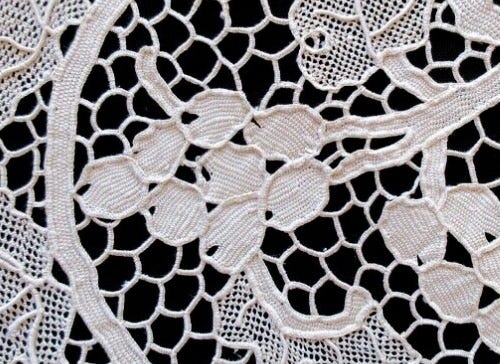
I love lace. But I never knew the subtle differences (and not so subtle!). Thank you for sparking a few neurons in the old brain!
Excellent explanation and photos. Keep up the good work ))) I'll have you MAKING some soon. You won't be able to resist. The more you know and the more you share, the more it gets in your blood and takes over your fingers. Last??? in a series about antique lace???? I hope not. Come spend a week with me and you'll find out WHY every thread goes where it goes... and how it gets there. You'll be the one putting. Its beautiful, addictive, and contagious, and that's a good thing. )))))K